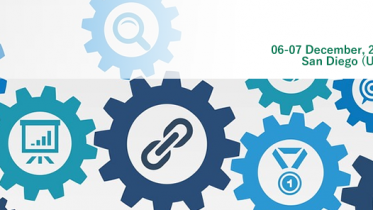Interview with Dr. Mónica Alandete. “Transfiere is an event in which dialogue is made easier to promote products”
- 11 February 2014
- Articles
Dr. Mónica Alandete-Saez is the “Director of Analysis & Outreach” at PIPRA (University of California, Davis) (www.pipra.org).
Her training courses and advisory services have become a reference in the area of Industrial and Intellectual Property so that, taking advantage of the fact that she is a speaker in one of the talks/debates organized by the UPM chair- Clarke, Modet & Cº, we have asked her to talk to us about Technology Transfer Models.
Mónica, welcome to Clarke, Modet & Cº. It’s a pleasure to have you here with us and to enjoy one of your speeches on the Transfer of Technology and Industrial Property. Although you have been living abroad for a long time, we know that you were born in Valencia.
Yes, I was born in Valencia. I started my adventures abroad when I completed my degree. Before going to England I was awarded an Erasmus grant to study in Oslo. After that, the Mediterranean Saving Bank, CAM, gave me a grant to do a master’s degree in Plant Biotechnology and, when I finished that, I got another grant to do a Doctorate.
We can see that you have had an intense academic education as regards Industrial and Intellectual Property but, what was your field of specialization?
I am a scientist. I completed my doctorate in England and then went to the USA to do a postdoctoral course. I specialized in Technology Transfer after defining my technical professional profile. In the USA, people who start to work in the fields of Intellectual Property or Technology Transfer need to have solid technical training, in biotechnology, agriculture, engineering, etc.
You now live in California and work at PIPRA (University of California, Davis), as “Director of Analyses & Educational Outreach”. Tell us about PIPRA and what it does.
It’s a Non Profit Organization based at the University of California, Davis. Our mission is to provide support for new technologies from public institutions in the Bio-agri sector in order to facilitate their commercialization.
The origins of our non-profit organization were focused on technologies to be applied in developing countries but, with the passage of time, we now also provide support for humanitarian projects, as well as working with governments, private foundations and companies.
We work more with the public sector. We provide support for public universities. In the USA, the majority of our projects are financed by government funds or private foundations; we also often go to Africa or Latin America to train Public Institutions without the necessary structure, formation or vision to carry out the transfer.
What we sometimes do in the case of private enterprises is to help with the establishment of agreements with third parties; we act as intermediaries to put the different actors into contact so that the agreement can be reached.
We normally provide our services to Government or Public Administration Institutions, helping them to strike up a dialogue with the private sector given that we have the sufficient knowledge to bring about these contracts.
Does having a patentable innovation ensure economic profitability?
Just having a patent does not ensure that you are going to make it profitable in economical terms. The patent gives you the right to temporarily exclude others from this technology to be able to exploit it exclusively, but in the case of universities, they have to find a partner who is interested in putting this technology into practice, normally early on, to be able to exploit it, sell it and earn money. The university transfers and delegates the responsibility of selling it, as its mission is not to sell it but to generate and promote knowledge, as well as provide social benefits.
The transfer stages and the role of the private sector must be understood for it to be successful. If you license a technology with great potential to a company that does not have the resources or the capacity to sell it, it is pointless, and you lose this technology along the way. Therefore, the role of the transfer office in the university is to identify the private investor who can actually put this product on the market.
Is it possible that universities and research centers have performance expectations for the patents of their inventions that are too high? Are there real expectations which are not easy to achieve, particularly economically speaking?
When we organize workshops in Latin-America, we try to send the message that transferring technology is not a panacea and that in reality they are not going to ‘get rich’ from it. That is not the function or the mission of Technology Transfer. The aim is, however, to transfer technologies for the benefit of society, given that it can access them if they are available on the market, and have been generated in universities with public financing. The company also benefits from licensing services or technologies generated at the university as they will be able to sell and obtain profits from the sale. Nevertheless, a percentage of these sales will be paid as royalties to the university and reinvested in research programs to train students and spread information.
Once the university licenses a patent for example, can it do so exclusively?
Exclusive or non-exclusive licenses, it depends on the technology. Sometimes their application in the market is so extensive that the university can create a greater positive impact on society with a non-exclusive license so that several companies can sell it, than with an exclusive license for a single company. It then depends on the strategy devised and carried out.
The 3rd edition of the Multisectoral Forum TRANSFIERE will be held in Malaga on the 12 and 13 of February. We know that last year you attended as a speaker, what was your impression of it?
I thought it was great. It’s the way to attract different actors to an event where dialogue is made easy and collaborations to bring products to the market are encouraged. They covered a lot of topics and a lot of people attended, also from abroad, with different European models.
This 3rd edition of Transfiere is all about commercialization with companies from Latin America.
Latin America is growing fast. Until relatively recently they had not adopted or accepted Industrial Property as a mechanism for innovation, but they are opening up and realizing that they have to use Industrial Property as a strategic way of attracting international and domestic investors to promote economic growth. It makes a lot of sense for Spain to pay attention to these emerging economies.
You have to understand that the private sector is not going to show an interest in licensing Industrial or Intellectual Property generated by universities if it does not have confidence in the legal structure of the country that is going to support them and if they are really going to have exclusivity and are not going to be copied by others.
If the possibility exists that third parties may copy patented technologies without legal consequences, it is unlikely that the private company is going to make that investment, because they are going to lose money.
If you had to state the sectors that invest most in Intellectual Property and opt more for Technology Transfer, which would they be?
It depends on the country. In my experience, the more applied sciences are those which have the ability to commercialize products. I always think of them in three branches:
– Engineering, such as mechanical or electronic engineering
– Information technology, like software
– Biotechnology, a market with a great demand in the USA
In an attempt to envisage the future of Transfer of Technology, how do you think companies will tackle this field?
I am convinced that the proper management of Industrial and Intellectual Property is a very powerful tool to promote innovation and economic growth. It is proven that the role of the public universities or public research institutions can be very important in terms of innovation.
In some countries like the USA, or specifically in states like California, the transfer of technology and the creation of public-private associations is a fundamental part of the economy of the region.
It is only a matter of time before many world economies realize that instead of being a negative mechanism for promoting innovation, it is positive. And then they will start working on creating the culture, having the infrastructure, trained personnel and the legislation… all the mechanisms that make it easier and possible.
Lastly, being an entrepreneur is a way to encourage R& D what do you think?
The American culture is very pro-active, it encourages students, young people and university professors to create new companies, or rather become entrepreneurs.
The American culture does not regard someone who falls or stumbles along the way as something negative, but rather as something positive provided that you learn from your mistakes. It is an experience that you are going to use during your next stage in order to improve.
If you decide to create a company and for some reason it doesn’t turn out well, which is quite common, the culture in the USA is not to stigmatize you. In Latin-American countries or in Spain, if you fail, you are labeled a loser and stigmatized.
The US culture supports the vision that it is probable that you will have several failed attempts before achieving success. This culture and way of thinking promotes a positive entrepreneurial attitude.
Complete Interview here








